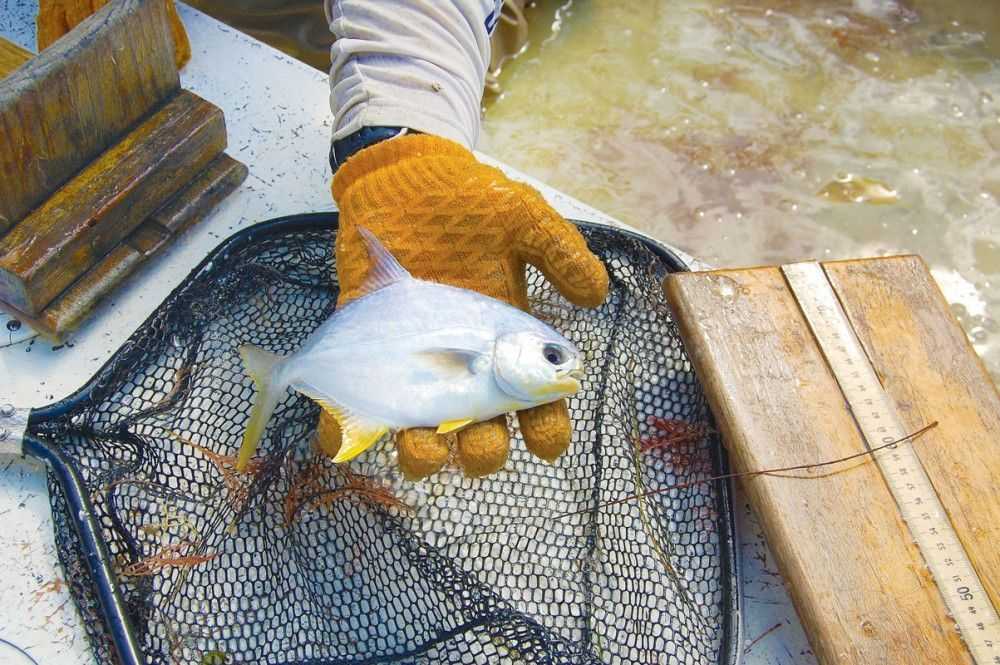The Lesser Aristocrat
Pompano Are A Rival To Red Snapper
Dr. Bob Shipp
Red snapper are widely considered the aristocrat of Gulf of Mexico fishes, both for their culinary attributes as well as the notoriety afforded them by recent management measures. But our Florida pompano rivals red snapper at least in its attributes as table fare.
Pompano en papillote (“in a balloon”) is a famous dish, created ages ago by Antoine’s restaurant in New Orleans. Basically it’s a concoction of pompano, shrimp, oysters, and mushrooms with wine and lemon juice. The uniqueness comes when the bag is unwrapped and the entrapped aroma covers the table.
I know this is not a cooking column. My point is that pompano is a class fish. Intense netting over recent decades appears to have reduced their numbers, but there’s an anecdotal opinion that in recent decades their numbers have begun to increase as overharvest was lessened by more restrictive measures. This is certainly good news for me, because fishing for pompano is my favorite pastime.
Pompanos are members of the jack family, a diverse group with a wide variety of flesh quality. Crevalle jacks are intensely bloody; amberjacks can have a slightly “fishy” taste. The pompano is the true class of the family, with firm but pearly white flesh.
I think the pompano’s flesh quality comes from its diet. Unlike its cousins, pompanos are not fish eaters. Rather they munch and crunch on small-shelled invertebrates that abound in the sand. That’s one reason pompano eat small lead-head jigs bounced slowly along the bottom.
Fishing for these prizes can be a low-effort exercise. My preference is to find an isolated beach when there’s moderate wave action and the water’s relatively clear. Two surf rods with double hooks and a 1-ounce pyramid lead is perfect. Bait with shrimp, squid or mole crabs (sand fleas), and toss out about 30 or 40 feet. Then place the rods in sand-anchored rod holders, sit back and enjoy a beverage. When the pole snaps down, the fun begins.
Pompano are a short-lived species, probably rarely living more than two or three years, and rarely reach more than 5 pounds. They spawn in early spring, and by summer’s end one may see in the shallow surf schools of 6-inch juveniles that extend for hundreds of yards. In earlier days, these were netted and exported to Asia. Fortunately that practice has practically ceased.
Along the northern Gulf, the arrival of pompano nearly coincides with the return of cobia, usually in late March. And since cobia migrations are well studied, one might consider pompano as a migratory species. But lately there has been new information that questions that notion. Anglers fishing near the bases of rigs have been turning up pompano during the dead of winter. It may well be pompano are retiring to habitats where more prey items abound, rather than hang around the surf zone which becomes pretty much devoid of inhabitants during the cold months.
I suspect pompano have a far greater economic value than generally thought. I walk the beaches a lot, especially from Mobile to St. Andrews Bay. If the weather’s fine, there are scores of anglers casting into the surf. Many I’ve talked to are tourists from the north who have no idea what their target is. And most often it is a catfish or ladyfish. But they may luck out with a bluefish, or better yet a Gulf kingfish (whiting). But the true trophy, the aristocrat of the surf zone, would be a pompano. One would only hope there would be someone to inform them when they catch the prize.
Dr. Bob is author of Dr. Bob Shipp’s Guide to Fishes of the Gulf of Mexico. Autographed copies are available at his bobshipp.com. Contact Dr. Bob at rshipp@southalabama.edu.
